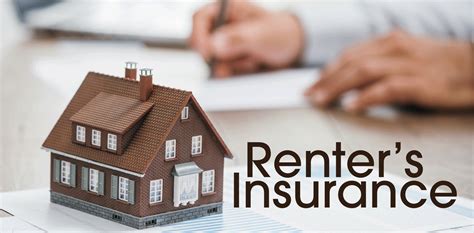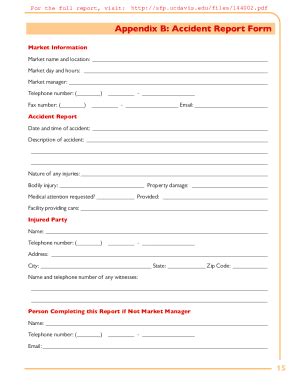What Is Covered In Homeowners Insurance
Homeowners insurance, a cornerstone of financial protection, safeguards one of life's most significant investments—your home. It's an essential aspect of responsible homeownership, offering a safety net against unforeseen events and providing peace of mind. In this comprehensive guide, we'll delve into the world of homeowners insurance, exploring what it covers, how it works, and why it's crucial for every homeowner.
Understanding Homeowners Insurance: A Comprehensive Protection Policy
Homeowners insurance is a tailored insurance policy designed to shield homeowners from financial losses arising from various risks and liabilities. It's a multifaceted protection plan, encompassing a range of coverages to address different potential scenarios. Here's an in-depth look at what's typically included in a standard homeowners insurance policy.
1. Dwelling Coverage
At the heart of homeowners insurance is dwelling coverage, which provides financial protection for the physical structure of your home. This coverage applies to the main dwelling and often includes attached structures like decks and patios. It covers damages caused by a range of perils, including fire, lightning, windstorms, hail, explosions, and more. Dwelling coverage is crucial as it helps rebuild or repair your home in the event of a covered loss.
| Perils Covered by Dwelling Insurance | Real-World Examples |
|---|---|
| Fire | Fire damage from electrical malfunctions or lightning strikes. |
| Lightning | Structural damage caused by lightning strikes. |
| Windstorms | Roof damage from a hurricane or tornado. |
| Hail | Window or roof damage from hailstones. |
| Explosions | Damage resulting from a gas leak explosion. |
2. Personal Property Coverage
Personal property coverage is an essential aspect of homeowners insurance, as it protects your belongings inside the home. This coverage applies to a wide range of items, including furniture, electronics, clothing, and appliances. It provides compensation for losses due to covered perils, such as theft, fire, or vandalism. However, it's important to note that there may be limits or exclusions for certain high-value items, such as jewelry or collectibles.
3. Liability Coverage
Liability coverage is a critical component of homeowners insurance, offering protection against lawsuits and legal expenses. It provides coverage if someone is injured on your property or if your actions elsewhere cause injury or property damage. For instance, if a visitor slips and falls on your driveway, liability coverage can help cover their medical bills and any legal fees. It's a safeguard against financial ruin in the event of an unexpected liability claim.
4. Additional Living Expenses (ALE)
In the event that your home becomes uninhabitable due to a covered loss, additional living expenses coverage kicks in. It covers the cost of temporary housing, meals, and other necessary expenses while your home is being repaired or rebuilt. This coverage ensures that you're not left financially strained during the recovery process.
5. Medical Payments Coverage
Medical payments coverage provides limited medical expense coverage for injuries sustained by visitors on your property, regardless of liability. It covers medical bills for minor injuries, helping to ensure prompt medical attention without the need for a lengthy liability determination process.
6. Other Structures Coverage
This coverage extends to detached structures on your property, such as sheds, garages, or guest houses. It's typically a percentage of the overall dwelling coverage, providing financial protection for these additional structures in the event of damage or destruction.
Customizing Your Homeowners Insurance: Tailoring Coverage to Your Needs
While a standard homeowners insurance policy offers comprehensive coverage, it's important to tailor it to your specific needs. Every home and homeowner is unique, and insurance policies can be customized to address these individual requirements. Here's how you can personalize your coverage:
1. Adjusting Coverage Limits
You can increase or decrease coverage limits for various aspects of your policy, such as dwelling coverage, personal property coverage, or liability limits. This allows you to align the policy with the actual value of your home and possessions, ensuring you're not underinsured or paying for unnecessary coverage.
2. Adding Endorsements and Riders
Endorsements and riders are additions to your policy that enhance coverage for specific items or circumstances. For example, you might add an endorsement for high-value items like fine art or jewelry, ensuring they're adequately insured. Riders can also provide additional coverage for specific risks, such as flood or earthquake protection.
3. Choosing the Right Deductible
The deductible is the amount you pay out of pocket before your insurance coverage kicks in. Choosing a higher deductible can lower your premium, but it means you'll pay more out of pocket in the event of a claim. It's a balance between affordability and financial protection, and it's important to select a deductible that aligns with your financial comfort level.
4. Reviewing Coverage Annually
Your home and life circumstances can change over time, so it's crucial to review your homeowners insurance policy annually. This ensures that your coverage remains up-to-date and aligned with your needs. Life events like renovations, purchases of valuable items, or changes in family structure can impact your insurance requirements.
Understanding Exclusions and Limitations: Knowing What's Not Covered
While homeowners insurance provides extensive coverage, it's essential to be aware of what it doesn't cover. Exclusions and limitations vary depending on the policy and the insurance provider, but some common exclusions include:
- Flood damage: Flood insurance is typically a separate policy and is not included in standard homeowners insurance.
- Earthquake damage: Like flood insurance, earthquake coverage is often an add-on policy.
- Normal wear and tear: Damage resulting from the natural aging process of your home or belongings is usually not covered.
- Intentional damage: Any damage you intentionally cause to your home or belongings is not covered.
- War and nuclear incidents: Damage resulting from war or nuclear incidents is typically excluded.
Filing a Homeowners Insurance Claim: A Step-by-Step Guide
In the event of a covered loss, filing a homeowners insurance claim is a crucial step toward recovery. Here's a simplified guide to help you navigate the process:
- Contact Your Insurer: Reach out to your insurance provider as soon as possible after the incident. They will guide you through the claim process and provide the necessary forms.
- Document the Damage: Take detailed notes and photographs of the damage. This documentation is essential for assessing the extent of the loss.
- Complete the Claim Form: Provide accurate and complete information on the claim form. Be honest and thorough in your description of the incident.
- Submit Supporting Documents: Gather and submit any relevant documents, such as repair estimates, receipts for damaged items, or medical bills if applicable.
- Wait for the Adjuster's Assessment: An insurance adjuster will review your claim and assess the damage. They will determine the extent of coverage and the amount of compensation.
- Receive Compensation: Once the claim is approved, you'll receive compensation based on your policy's terms. This can be in the form of a check or direct payment to your repair or replacement service providers.
The Bottom Line: Why Homeowners Insurance is a Necessity
Homeowners insurance is more than just a financial protection policy; it's a safeguard against unforeseen circumstances that could have a devastating impact on your life and finances. It provides peace of mind, knowing that you're protected against a wide range of risks. From natural disasters to unexpected liabilities, homeowners insurance is a crucial aspect of responsible homeownership.
By understanding what's covered, tailoring your policy to your needs, and being aware of exclusions, you can make informed decisions about your insurance coverage. Remember, your home is likely your most significant investment, and homeowners insurance is the key to protecting that investment and your financial future.
Frequently Asked Questions
What is the difference between dwelling coverage and personal property coverage in homeowners insurance?
+
Dwelling coverage protects the physical structure of your home, including attached structures like decks and patios. On the other hand, personal property coverage insures your belongings inside the home, such as furniture, electronics, and clothing. While dwelling coverage is essential for rebuilding or repairing your home, personal property coverage ensures that your possessions are protected from various perils.
Are there any limits to personal property coverage in homeowners insurance policies?
+
Yes, there are typically limits and exclusions for certain high-value items in personal property coverage. These may include jewelry, collectibles, fine art, and other valuable possessions. It’s important to review your policy or consult with your insurance provider to understand the specific limits and any additional coverage options available.
How does liability coverage work in homeowners insurance, and what does it cover?
+
Liability coverage in homeowners insurance provides protection against lawsuits and legal expenses resulting from accidents or injuries on your property. It covers situations where you or a family member may be held legally responsible for causing bodily injury or property damage to others. This coverage helps safeguard your finances by covering medical bills, legal fees, and any settlements or judgments that may arise from such incidents.
What is additional living expenses (ALE) coverage, and when does it apply?
+
Additional living expenses (ALE) coverage is a provision in homeowners insurance policies that covers the cost of temporary housing, meals, and other necessary expenses when your home becomes uninhabitable due to a covered loss. This coverage kicks in to help maintain your standard of living while your home is being repaired or rebuilt, ensuring you’re not financially burdened during the recovery process.



